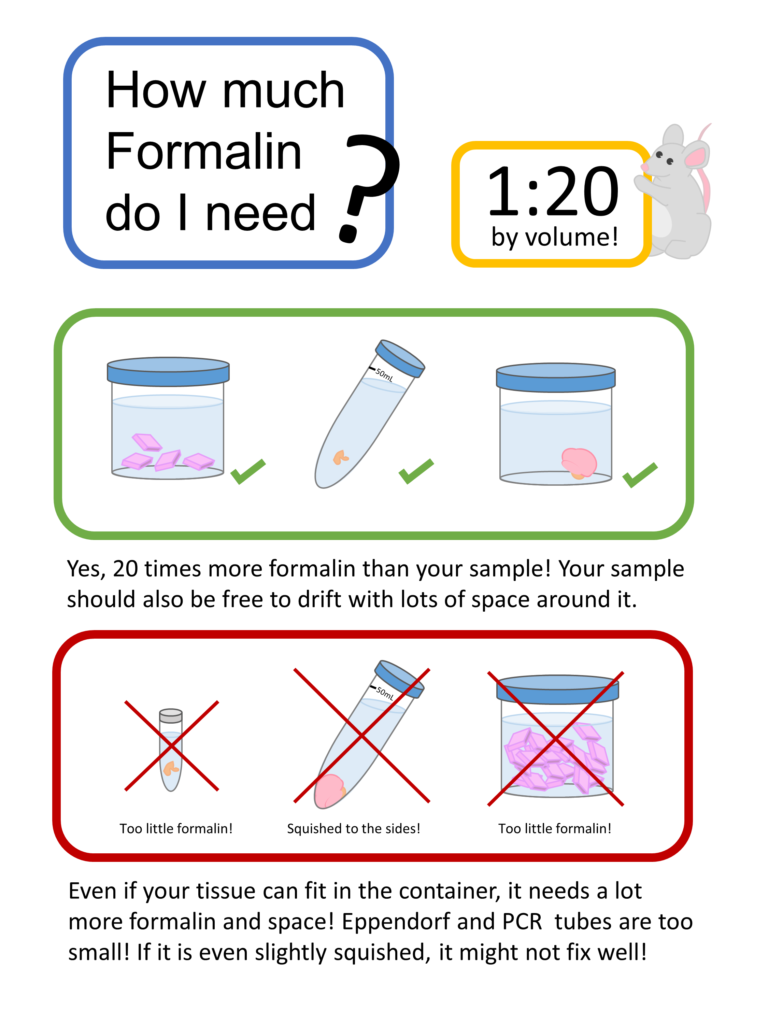Fixed Tissue
For optimal fixation and subsequent processing, please conform to the following recommendations:
Tissue size should not exceed 2.0 x 2.0 centimeters with an ideal thickness of three millimeters. Two to four millimeters is an acceptable range.
The amount of fixative must be AT LEAST 10 times the volume of the sample; 20 times the volume is optimal!
Fix for a MINIMUM of 24 hours and aim for 48 as a standard. A shaker or rocker will greatly assist in attaining even and complete fixation.
Tissue can be submitted in formalin, but it is preferable that samples be transferred to 70% ethanol or PBS before submission. Please note the fluid type on the sample container. Check the special considerations below for exceptions.
Use LEAK-PROOF, flat-bottom containers made for histology if possible. We can return these containers to you after processing to be washed and reused. Avoid containers with narrow necks. The tissue should drift freely in the container. 15mL falcon tubes, eppendorf tubes, and PCR tubes are not good containers.
Special Considerations
Brain and Nervous Tissue
These should be submitted in formalin after fixation for a minimum of 48 hours. Prolonged exposure to 70% ethanol (longer than 20 hours) can result in vacuole formation in the white matter, so transfer to ethanol is not recommended.
Eyes
Eyes will exhibit superior morphology if fixed in Davidson’s Solution instead of formalin alone.
After fixing in Davidson’s for 24 hours, eyes may be transferred to either formalin or 70% ethanol.
Davidson’s Solution
Glacial acetic acid, 100 ml
95% ethyl alcohol, 300 ml
10% neutral buffered formalin, 200 ml
Distilled water, 300 ml
Tissues Prone to Rapid Autolysis
Including Pancreas, GI tract, Liver, and Kidney.
Collect these tissues immediately after euthanasia and place into fixative. This will prevent autolysis and drying. Any part of the tissue that dries out before being fixed can create artifacts demonstrated in stained sections.
The intestinal tract should be gently flushed, first with saline then with formalin. Residual gut contents may hinder fixation and compromise the preservation of the mucosal architecture.
The liver and kidney should be nicked to allow for better formalin penetration. Routine sampling of the liver includes one cross-section of the median lobe and one from the left lateral lobe. For routine kidney trimming, bisect the left kidney longitudinally and the right kidney transversely.
The pancreas is highly autolytic and notoriously difficult to fix without some degree of degradation. If possible, it’s recommended that the pancreas be inflated with fixative and clamped before harvesting.

